Sign up for Chalkbeat Chicago’s free daily newsletter to keep up with the latest education news.
This story was reported and published in collaboration with Block Club Chicago. Sign up for their newsletters here.
Leer en español.
Gabriela Aquino Ruiz relies on a translation app to learn, but some of her teachers talk so fast in English, the software can’t keep up.
The soft-spoken 12-year-old, who speaks only Spanish, loves to read, but her school — Isabelle C. O’Keeffe School on Chicago’s South Side — doesn’t have books in her native language, and she’s struggling to make friends, she said.
Gabriela misses her school in Venezuela, where she and her family emigrated from in October.
“I want to learn,” she said in Spanish through a translator. “I feel frustrated when I get home.”
Gabriela is one of nearly 9,000 migrant students enrolled in Chicago Public Schools as of April. Many of those students are leaving shelters and finding housing that provides them much needed stability.
Gabriela’s family moved from a shelter in Little Village to an apartment in South Shore, the top neighborhood where families have resettled in Chicago through a state program that helps cover their rent, according to data obtained by Chalkbeat and Block Club Chicago through a Freedom of Information Act request.
But the promise of housing comes with a cost: Families are moving to more affordable neighborhoods that also are some of the city’s most segregated. As a result, students are landing in schools with little to no bilingual staff or support, according to data obtained through open records requests and more than 50 interviews with families, teachers and experts.
That has resulted in some students falling further behind in their studies, custodians taking on translation roles, and school leaders struggling to comply with a state requirement that they provide bilingual education if student enrollment meets certain thresholds.
The surge of new students, many of whom fled political and economic turmoil in Central and South American countries, is exposing the cracks in a school system that has for years struggled to fully comply with state and federal laws around bilingual education.
Even before buses carrying migrants began arriving in waves from Texas in 2022, Chicago’s public schools failed to fully comply with multiple internal and state audits related to bilingual instruction, documents show.
CPS schools that already had bilingual programs have fallen short of a range of requirements, such as providing bilingual instruction in core subjects to all students who need it, having properly certified teachers, and teaching students about their native country and culture. Now, a crop of additional schools that have enrolled waves of migrant students need to bolster staff.
“We are very concerned about those language deserts in the city … where there are no English learner services,” said Karime Asaf, the chief of the district’s Office of Language and Cultural Education, which oversees instruction for English learners.
As of March, at least 72 K-12 schools across the district had vacancies for bilingual staff or teachers certified to teach English as a new language, at least a quarter of which are in the top 10 neighborhoods where asylum-seeking families are moving.
District officials said creating bilingual programs and complying with audits require finding properly certified teachers, which has been a nationwide challenge. They pointed to newer efforts, such as recruiting existing CPS students to become teachers, but added that CPS needs more funding.
“There is always a need for additional support and improvements in the process, and we are working to secure more funding from the state and federal governments to support all of our students,” said CPS spokesperson Sylvia Barragan.
Asked why the district and city are still struggling to provide support to migrant students, Mayor Brandon Johnson told Chalkbeat and Block Club that asylum-seeking families are settling in “neighborhoods that have been historically disinvested,” which puts “pressure on that system that is already weighted,” referring to neighborhood schools that he believes lack adequate resources.
As a former middle school teacher and Chicago Teachers Union organizer, Johnson has called for investing more money in neighborhood schools.
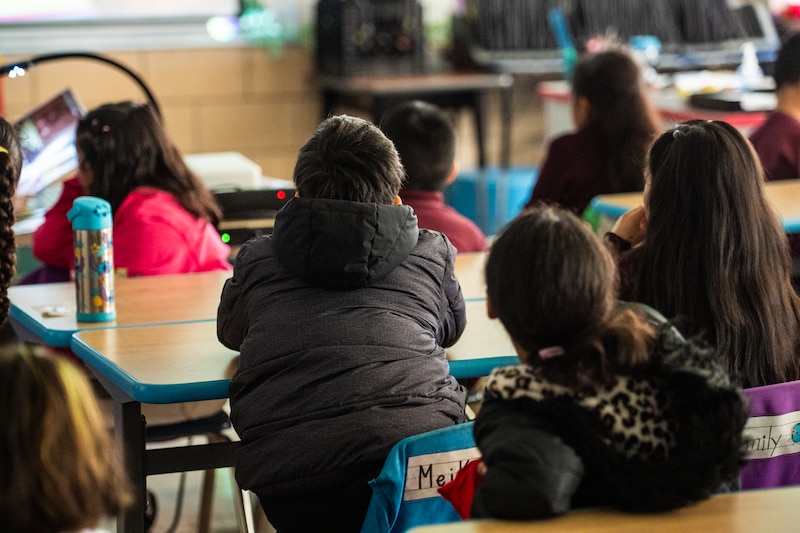
In response to the rapid arrival of migrant students over the past two years, CPS opened a “welcome center” at Roberto Clemente High School and is working with the city and shelter staff to help families with school enrollment, officials said. The district is also trying to attract more bilingual educators and is prioritizing extra support for schools that have traditionally not served English learners, officials said.
But teachers say the district’s efforts haven’t translated into more resources on the ground, and migrant kids are missing out on vital instruction. At Laura S. Ward Elementary School on the West Side, which has gained dozens of English learners, a kindergarten teacher and two custodians are translating for the whole building.
“They were dropped at our doorstep, and we’re supposed to keep it moving, accept these children, educate them and keep it moving,” said Dewanda Watt, first grade teacher at Ward, one of dozens of schools CPS identified as lacking enough staff for English learners.
“There should’ve been a plan. There was no plan from Chicago Public Schools.”
Migrant families resettle on South and West sides
Like many migrants, Gabriela and her family left Venezuela for Chicago in October to escape the country’s socioeconomic and political turmoil, said Gabriela’s mother, Yennifer Ruiz.
The family lived in the Englewood Police District station for a few months before moving into a shelter in Little Village, a historically Mexican neighborhood. Ruiz enrolled her son and daughter in schools with Spanish-speaking staff: Eli Whitney Elementary School and Richards Career Academy.
But when the family moved about 13 miles southeast to an apartment in South Shore, Ruiz decided to switch her daughter to O’Keeffe, a mostly Black, low-income school that lacks bilingual resources but was close to home.
Like the Ruizes, one in 10 families seeking asylum have landed in the South Shore area through a state resettlement program called the Asylum Seeker Emergency Rental Assistance Program, according to data obtained by Block Club and Chalkbeat.
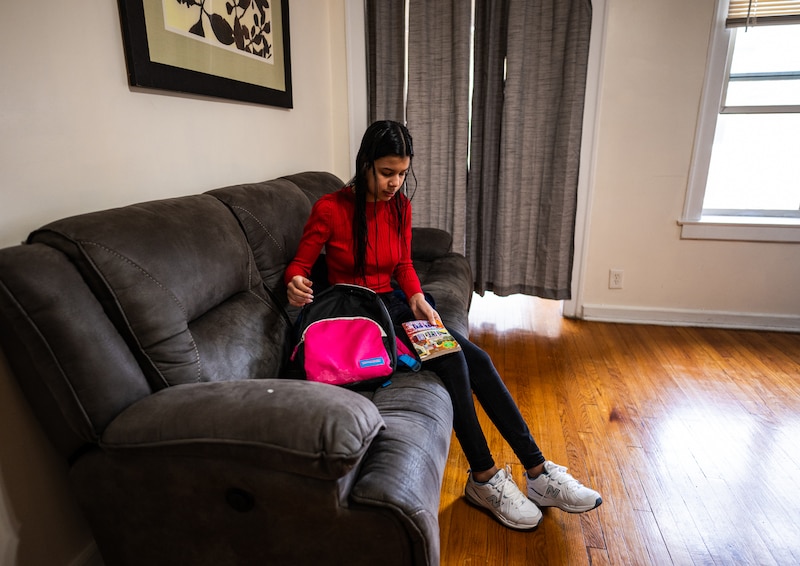
Run by the Illinois Housing Development Authority and the Illinois Department of Human Services in partnership with Catholic Charities, the rental assistance program covers three months of rent for people migrating from the southern border who are seeking asylum and arrived in the city’s shelters before Nov. 17, 2023. It is the city’s main strategy to get families into permanent housing once they leave shelters.
Data show nearly 60% of the roughly 5,000 families using the program to resettle in Chicago are finding housing in predominantly Black, low-income communities on the South and West sides — historically neglected neighborhoods with schools that don’t serve many English language learners and often don’t have staff certified to teach those students.
Through the state program, families can choose where to live, and “ultimately, low rental cost is what drives selection,” said Daisy Contreras, a spokesperson for the Illinois Department of Human Services.
State law requires schools to launch bilingual programs — instruction in English and a child’s native language — when they enroll 20 or more English learners who speak the same native language. Schools must also teach students about their native country’s history and culture.
But as families leave shelters and find housing in relatively cheap, segregated neighborhoods, they’re encountering segregated schools that suffer from years of declining enrollment and inadequate resources, much less fully-staffed bilingual programs.
This was the case for Nathaly Garcia when she recently moved out of a downtown shelter to a three-bedroom apartment in South Shore with rent covered by the state program. Her 11-year-old son, Santiago, had enrolled at Ogden International School in the Gold Coast and moving meant their commute time would triple.
But Garcia didn’t want to enroll her son in the school near the new apartment because she had heard bad things about it and felt the school’s reading and math test scores were not high enough, she said.
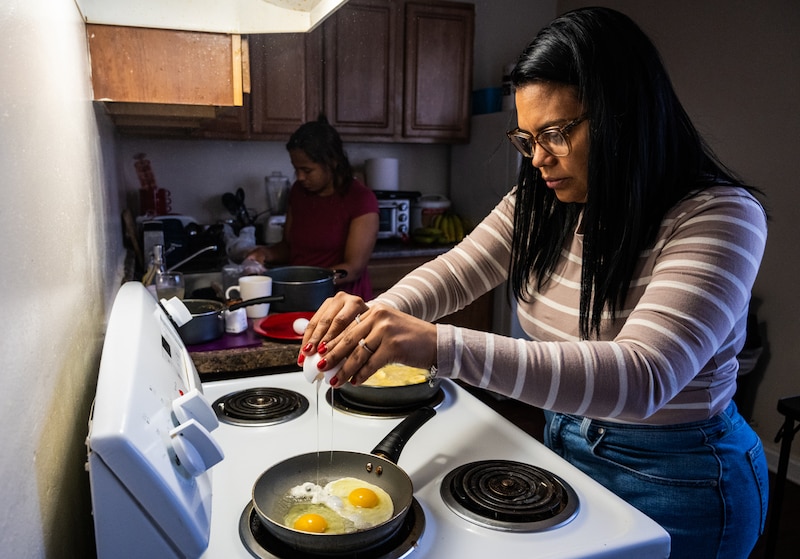
Even after families leave shelters, their children are legally entitled to stay in the school where they originally enrolled because the district’s guidelines classify those students as homeless, providing them with certain federal protections.
So Garcia and her son now take two buses an hour and a half each way to continue at Ogden. Garcia said no one told them they could apply for yellow bus service.
In Yennifer Ruiz’s case, no one explained that her daughter had a legal right to stay at Eli Whitney, the school the girl went to when they lived in the Little Village shelter, she said. In fact, when Ruiz showed Eli Whitney staff where she was moving, they said she would be “too far” outside of the attendance boundaries, she said.
District officials said they help families enroll in or transfer to other schools that are not in their neighborhood, but may have better resources, such as bilingual programs. Asaf said migrant families, like all Chicago families, can choose where to send their children to school.
“They’re individual, independent residents of the city,” Asaf said, adding that the district gets in touch with principals “the moment we hear school calls for support.”
O’Keeffe’s principal has requested help from the district, and Gabriela has recently started learning English through an after-school program, Ruiz said.
The school district spokesperson said O’Keeffe recently enrolled enough English learners to warrant a bilingual program, and the school has been approved to hire a part-time teacher to work with those students.
Still, Yennifer Ruiz is saving up so the family can move out of the neighborhood and closer to a school that better serves her daughter, she said.
‘We have to build a program from the bottom up’
Ward Elementary School is in West Humboldt Park, a neighborhood that has affordable housing and sees a high number of drug and gun crimes. Nearly all of the school’s students are Black and come from low-income families.
Data show nearly 140 families have resettled in the Humboldt Park area through the state program.
After years of declining enrollment, Ward’s numbers stabilized this school year as migrant families found apartments near the school, said Watt, the school’s first-grade teacher.
Watt now has nine new students from Venezuela and Ecuador. But like other adults at Ward, she doesn’t speak Spanish. The elementary school has dozens of English learners, but no bilingual teachers or bilingual program, according to Watt and preliminary enrollment data.
It’s an “overwhelming” predicament, Watt said. Before this year, Watt, a teacher for 25 years, had never taught non-English-speaking students.
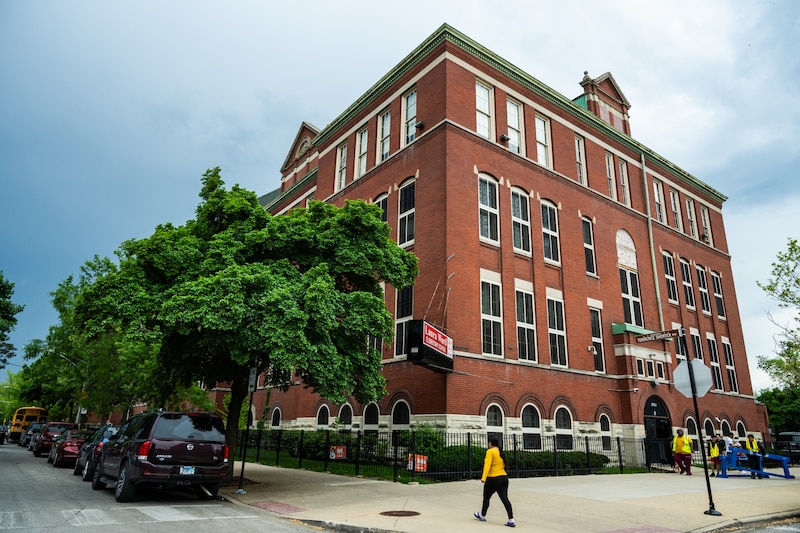
A CPS audit of Ward last April found the school, which had about 20 English learners at the time, wasn’t providing required instruction to all kids learning English and lacked enough certified staff, according to documents obtained by Chalkbeat and Block Club.
Ward is one of 72 K-12 schools CPS identified with vacancies for staff certified to teach ESL or bilingual classes as of April, according to district data. That excludes the district’s Virtual Academy. An ESL certification doesn’t mean the teacher speaks another language — just that they’re certified to teach ESL classes.
Those schools have seen the number of English language learners increase by an average of more than 40% this school year, according to a Chalkbeat and Block Club analysis of preliminary enrollment data.
Earlier this year, Ward enrolled enough English language learners to warrant a bilingual program and is now working to establish one, according to a district spokesperson. The school was approved in October to hire a part-time teacher position to work with English learners and can hire for a full-time position next year now that the school has enrolled more than 50 English learners, a CPS spokesperson said.
Currently at Ward, Watt and other teachers rely on Spanish-speaking staff who don’t have bilingual credentials — the kindergarten teacher and two custodians — to help them communicate with migrant students and families seeking help with school applications.
For a while, the kindergarten teacher was getting pulled out of her classroom up to five times a day to translate, she said. The district gave teachers translation devices, but Ward teachers said they don’t always function properly and are not a substitute for speaking the language.
The kindergarten teacher, who did not want to be identified because she wasn’t authorized to speak to the press, said she’s torn between her teaching responsibilities and her unofficial job as school translator. Watt said some of her migrant students are progressing academically, but others are struggling to understand their classwork and learn English.
“Some [teachers] are in schools where the [bilingual] program is already up and running; they’re just continuing on. As opposed to us, where we have to build a program from the bottom up,” the kindergarten teacher said.
Asaf, the head of the district’s Office of Language and Cultural Education, said CPS has been opening teaching positions for schools that are enrolling many more English learners. She acknowledged that help may not come right away, and it takes time to build bilingual programs.
“It’s not always easy and it’s not always immediate and it’s not always fast,” Asaf said. “This is a big district, and we are constantly paying attention to the number of [English learners] we have.”
A history of failing bilingual students
This is not the first time Chicago has been under scrutiny for how it serves students learning English.
In 1980, a federal consent decree forced CPS to come up with a plan to desegregate schools and to ensure English language learners were receiving an adequate amount of support. The decree had to be updated twice, in part because the district was failing to provide enough staffing and materials for English learners.
Schools are responsible for screening their students to determine which of them are learning English as a new language. Those students are legally entitled to additional support, such as specialized English instruction.
In addition to state requirements for bilingual programs, schools with 19 or fewer English language learners must have a program known as Transitional Point of Instruction, which teaches students in English. It’s not clear how many CPS schools are now required to have bilingual programs but don’t have them yet.
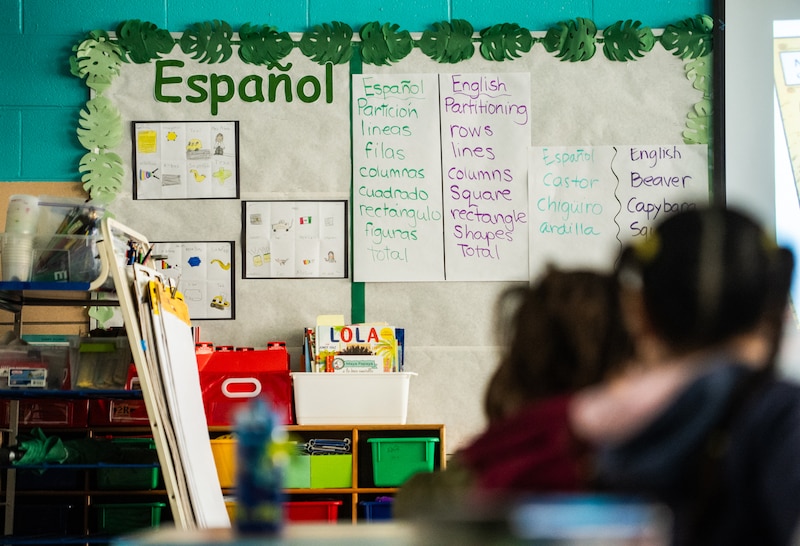
Segregation can play a large role in whether schools have bilingual support for students.
Chicago’s immigrants have always settled in neighborhoods with people who share their ethnicity or native language, said Jim Lewis, senior research specialist for Great Cities Institute at the University of Illinois at Chicago, who has studied segregation.
But some of Chicago’s recent Latin American newcomers, such as Venezuelans, do not have enclaves, Lewis said. Also, many historically Latino neighborhoods have become unaffordable for families who don’t have a stable income, potentially driving today’s newcomers to segregated neighborhoods that have been long ignored.
To get an apartment under the state program, families have to find a landlord who will participate in the program or get matched with one through Catholic Charities. The only stipulation is rent must be affordable, said Catholic Charities spokeswoman Emily Dagostino.
Catholic Charities is not involved in the school enrollment process, Dagostino said.
District officials said CPS works with the city’s Department of Family and Support Services, shelters and principals to help families enroll in school, and Asaf, the head of the district’s Office of Language and Cultural Education, emphasized that families have options.
But the district’s practice of helping families enroll in schools outside their neighborhoods doesn’t “follow the spirit” of what CPS says it aims to provide: equal access to quality neighborhood schools, said Jesse Ruiz, former interim CPS CEO and Chicago Board of Education vice president.
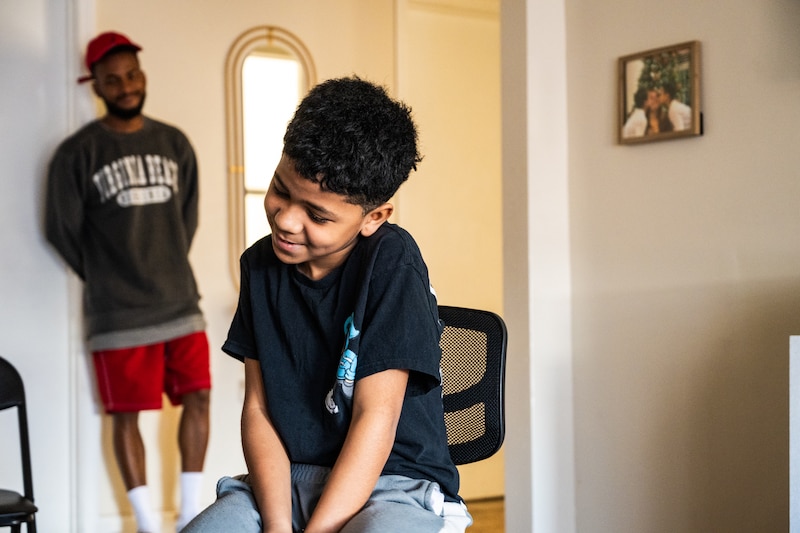
Ruiz led the charge to audit all of the district’s bilingual and ESL programs in 2015. That school year, 71% of schools audited were in serious violation of state requirements for bilingual education, the Chicago Reporter found at the time.
The issues have persisted.
During the 2021 school year — before buses from Texas began arriving — the Illinois State Board of Education put CPS on what’s called a “corrective action plan” after officials determined the district was out of compliance with bilingual education requirements, said Lindsay Record, a spokesperson for the board.
In a follow-up visit last year, the state found several improvements. But the district still failed to have bilingual programs at all schools that were supposed to have them, as well as enough certified teachers, according to corrective action plan documents.
Ruiz, also a former chairman of the Illinois State Board of Education, said he understands why under-resourced schools haven’t had bilingual programs if they didn’t historically serve English learners.
“But now they have these students, and that’s what the law says, that you have to provide bilingual education services to those students,” Ruiz said. “The district is going to have to provide those resources.”
‘It was a long journey’
Maria, a Venezuelan migrant who came to Chicago last summer, moved from a downtown shelter this February to an apartment in South Shore through the state’s rental assistance program. Block Club and Chalkbeat are using a pseudonym for Maria out of concerns for her family’s safety.
After the move, the family struggled to enroll their 8-year-old daughter in school. The first school noted that it lacked bilingual staff, and they were turned away from a second school for living outside of attendance boundaries, Maria said.
Desperate for another option, Maria’s family sought help from the Welcome Center at Clemente High School, where a staffer directed them to Erie Elementary Charter School, a dual-language school in Humboldt Park 90 minutes away via public transit from their South Shore apartment.
The long commute to Erie wasn’t easy, but Maria said it was worth it because her daughter was learning more English and “engaging in conversations.” Her daughter left Erie recently when the family moved to the suburbs.
Many of Erie’s 49 newcomer students are coming from all over the city, said Carlos Perez, the school’s executive director.
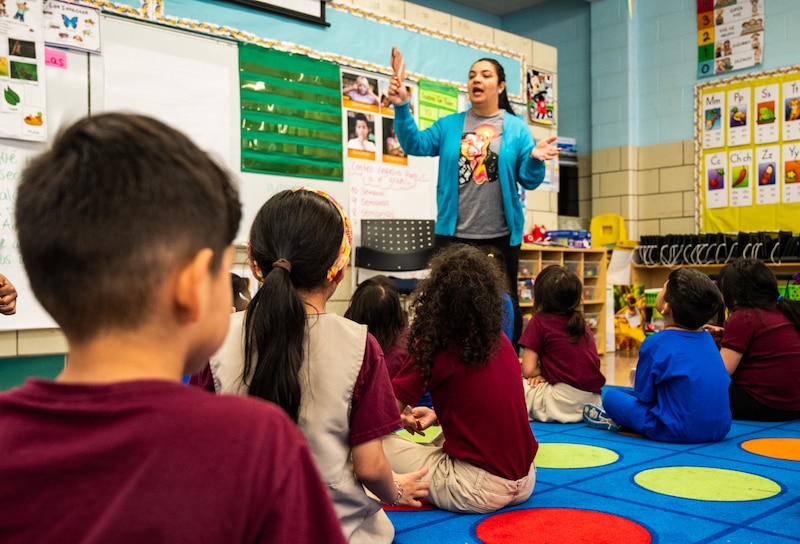
Erie is better-equipped than other schools to serve native Spanish speakers learning English. As one of 43 dual-language schools in the city, Erie teaches English learners and native English speakers in Spanish and English. Eight of Erie’s teachers are from Latin American countries, Perez said.
“It was a long journey that a lot of them have gone through to get to us. This was their target: to bring their kids to a school in America ... There’s a weight and responsibility that comes with it,” Perez said.
Even with those resources, teachers face big challenges. Most migrant students come to Erie more than two grade levels behind, and some haven’t attended formal school for up to two years, Perez said. In 2022, Erie was out of compliance with bilingual and ESL program requirements, according to the school’s most recent CPS audit.
Multiple principals questioned whether the audits are effective. Perez said one teacher who they consider effective is not certified to teach English learners — one reason the school is out of compliance.
“Are we aiming for compliance, or are we aiming to get good people in front of students who can educate them?” Perez said. “Oftentimes, those are not interchangeable things.”
According to CPS, it has about 7,500 teachers who are certified to teach bilingual classes, ESL or both — a figure that has grown in recent years. Many teachers certified to teach those classes are in regular teaching positions, a spokesperson said.
District officials said they’ve tried to attract more bilingual teachers by subsidizing the cost of earning bilingual or ESL endorsements and extending early job offers to teachers who are completing their requirements. But it’s difficult to fill teaching positions midway through the year, said Ben Felton, the district’s chief talent officer.
Felton said “we simply don’t have the talent” for every school to have big bilingual programs “because historically there haven’t been as many bilingual students in these schools.”
One child is thriving, another is ‘just stuck’
While Yennifer Ruiz switched Gabriela’s school after moving to South Shore, she opted to keep her 16-year-old son, Gabriel, at Richards Career Academy, which has a bilingual program.
After just five months in Chicago, Ruiz said she has seen how those bilingual resources have helped Gabriel thrive — he is rapidly learning English and even joined the school’s baseball team — and how the lack of services has left Gabriela feeling lost at school.
Gabriela wishes she could go back to Eli Whitney, where she liked being able to communicate with her teachers and other kids, she said.
“I feel really bad because all the objective of moving here was to get quality of life,” Ruiz said in Spanish through a translator. “I know how my son is getting to his maximum potential, but she is just stuck.”
Interviews with Spanish- speakers were conducted with translation help from Yoha Salmeron Chaparro, an intern at the Center for Immigrant and Refugee Accompaniment at Loyola University, and Alex Hernandez, a reporter for Block Club Chicago.
Reema Amin is a reporter covering Chicago Public Schools. Contact Reema at ramin@chalkbeat.org.
Mina Bloom is an investigative reporter for Block Club Chicago. Contact Mina at mina@blockclubchi.org.

